Kriya Yoga
A Path to Self-Realization
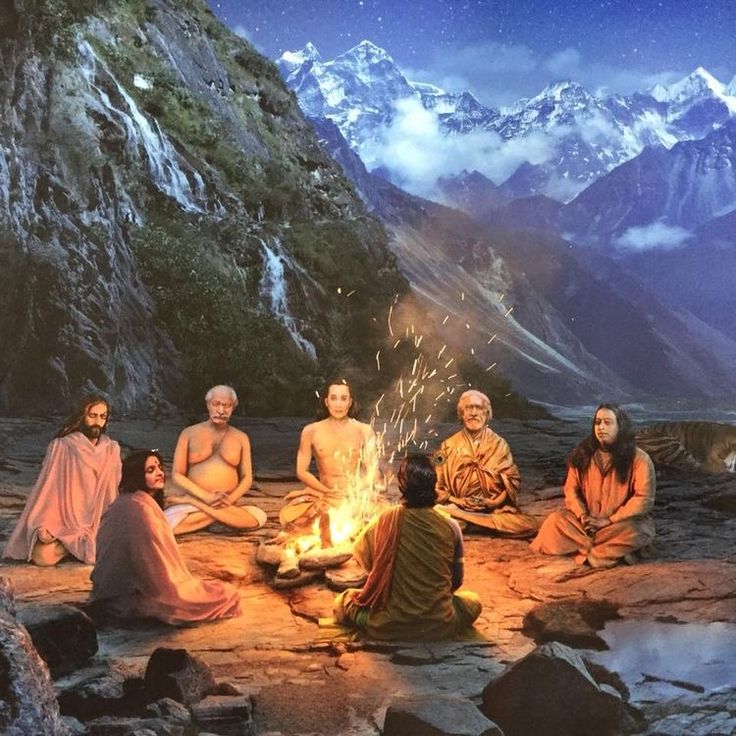
Kriya is not immediately right for everybody because it is a time and energy intensive yoga practice that requires commitment and dedication. However, stillness, meditation, and asana practice is easily for everybody! Kriya involves pranayama, visualization, somatic meditation, chanting, mudras, 108 mala beads, and energetic attunement as well as a sustained daily devotion. For Asana and preliminary meditation practices, and for transformative coaching:
On this page you will learn:
Overview of kriya and how Kriya masters describe it
Preparation for Kriya
The effects of burning off karma
Receiving initiation
The Kriya lineage
Kriya House’s endorsement of Self-Realization Fellowship and the Temple of Peace in Lakewood, CO.
Kriya House is dedicated to spreading the love and joy of meditation and Self-Realization and the practices, perspectives, and encouragement to gain firsthand, direct experience of divinity.
Om. Shanti. Peace. Amen.

Some of Lahiri Mahasaya’s Disciples
I, Emmy, received Autobiography of a Yogi from my partner Ryan when I really needed it! I promptly signed up for lessons through the Self-Realization Fellowship. After finishing the 18 lessons over the half year, I received Kriya initiation through Yoganandaji. Ryan, seeing my increased joy, peace, happiness, love, calm, and discipline also signed up for the lessons, but then received Kriya Initiation much quicker and to good effect, by the Temple of Peace. In the image above, you see that Sri Yukteswar Giri had many disciples, two of which are recognized alongside SRF’s lineage: Paramahansa Hariharananda, Swami Satyananda Giri, and current living president of Kriya International (Temple of Peace, Lakewood, CO) Paramahansa Prajnananda. These individuals have attained nirvikalpa Samadhi and are after the time that Yogananda established SRF, but through the fruits of their actions and their lessons and books, you can easily see they are sincere, authentic, great Masters of Yoga! Despite different approaches, SRF and Temple of Peace are both authentic Kriya Yoga teachers which we at Kriya House can full-heartedly endorse!
After retiring from his clerical work with the Indian postal service, Lahiri Mahasaya had a constant flow of devotees, disciples, and visitors in his humble home in Varanasi. Even his wife became his devotee during their householder years when she witnessed a siddhi (yogic power) in action, while he was in meditation. This was chronicled in Autobiography of a Yogi, when Yogananda visited her. Each subsequent disciple has kept a lineage as true to the teachings as they could muster, but certainly there have developed stylistic variations to the Kriya Yoga technique. Many paths exist to self-realization, and each devotee must find the path that resonates with their constitution, whether devotional or intellectual, each devotee must find their path! After a brief overview of some of the most notable disciples of Lahiri Mahasaya, I will expound on the differences in their approach to the spiritual path.
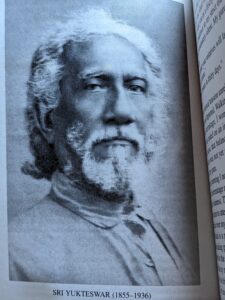
Swami Sri Yukteswar
Perhaps the most famous of Lahiri Mahasaya’s disciples, Sri Yukteswar is known for training Paramahansa Yogananda and authoring The Holy Science (Kaivalya Darsanam), which reconciles the teachings of East and West. He became a revered teacher of Kriya Yoga and a pivotal figure in the lineage.
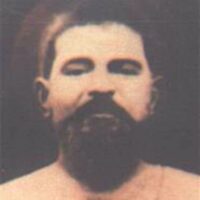
Panchanon Bhattacharya
Panchanon Bhattacharya helped disseminate Kriya Yoga teachings through his writings and the establishment of the Arya Mission Institution in Kolkata. He played a significant role in printing and spreading Lahiri Mahasaya’s teachings. He was focused on the organizational and publication aspect compared to others.
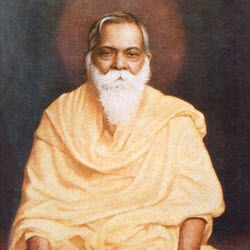
Sanyal Mahasaya
One of the youngest disciples, he played an important role in bringing Kriya Yoga to future generations. He focused on teaching pure Kriya practices as handed down directly from Lahiri Mahasaya. Bhupendranath Sanyal focused on the practical and devotional aspects of Kriya Yoga.
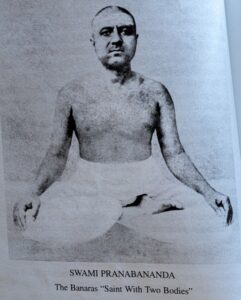
Pranabananda Giri
Known for his miraculous ability to appear in two places at once, Pranabananda Giri was deeply devoted to Lahiri Mahasaya. He is mentioned in Autobiography of a Yogi and was highly revered for his yogic powers and deep spiritual insight.
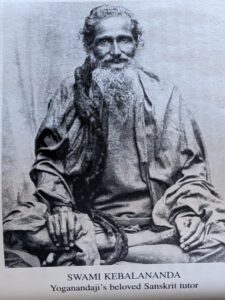
A reclusive yogi and teacher of Yogananda, Swami Kebalananda was highly devoted to spiritual practices and passed on his knowledge discreetly. He was Yogananda’s tutor in Kriya Yoga. AKA Shastri Mahasaya, he was able to integrate Kriya Yoga with traditional Vedantic and Yogic philosophies, elevating Kriya as not only a practical method for self-realization but also as a system deeply rooted in India’s ancient spiritual heritage.

Tinkori Lahiri
The son of Lahiri Mahasaya, Tinkori carried on the family legacy of Kriya Yoga. He focused more on preserving his father’s spiritual teachings rather than creating new frameworks or systems. His contribution is in maintaining the direct teachings and lineage.
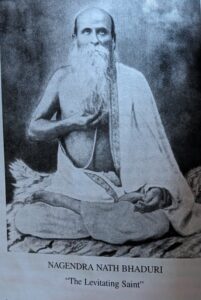
Nagendra nath Bhaduri
He was renowned for his advanced spiritual powers, including levitation. A humble householder yogi, he demonstrated that one could achieve profound spiritual heights while living a simple, worldly life. His dedication to Kriya Yoga exemplified the power of inner renunciation and mastery of consciousness, making him a revered figure in the spiritual lineage of Lahiri Mahasaya.
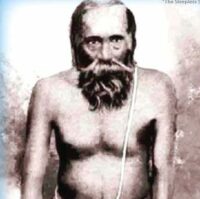
Ram Gopal Muzumdar
Known as the “Sleepless Saint,” Ramgopal had an intense focus on meditation. His key difference from others was his emphasis on deep, uninterrupted meditation to achieve higher states of consciousness. He led an extremely reclusive life dedicated to spiritual absorption.
Open To All Forms
The Divine Mother has many children of different dispositions, so she prepares different meals (religions, techniques, and paths) for her many children. Just as the mother caters to different tastes, the various disciples of Lahiri Mahasaya each contributed their unique perspectives and methods to the practice of Kriya Yoga. There are many paths to spiritual realization, and each approach has its own value. As Shri Shibendu puts it, “Anyone who wants to learn Kriya Yoga with full respect to the traditions is welcome.”
Remember that all is correct, as all is One! So, rather than fighting between lineages, respect that there are different styles of teaching, practicing, and transmitting. Don’t sue each other, don’t hoard teachings. Be open minded and generous, and do no harm.
Modernity vs Tradition: Yukteswar Giri, one of Lahiri Mahasaya’s prominent disciples, sought to bridge the gap between science and spirituality. He was a visionary who integrated scientific understanding with traditional Kriya Yoga practices, aiming to make spiritual teachings more accessible and relevant to the modern world. Sri Yukteswar’s disciple, Paramahansa Yogananda, was also said to be unconventional and free in his expression. In contrast, some of Lahiri’s disciples like Bhupendranath Sanyal adhered to a more orthodox approach, emphasizing the preservation of traditional methods and practices. Spiritual practices can evolve while still honoring their origins and it’s essence.
Public Dissemination vs Private Practice: The approach to spreading Kriya Yoga also varied among the disciples. Panchanan Bhattacharya was known for his efforts in publicly disseminating the teachings of Kriya Yoga, striving to reach as many people as possible. On the other hand, figures like Keshabananda and Ramgopal Mazumdar preferred a more personal and meditative approach, focusing on individual practice and the internal aspects of spiritual development. This difference in approach reflects the idea that while some are called to share their wisdom widely, others find their path in quieter, more introspective practices.
Family Legacy: Tinkori Lahiri, Lahiri Mahasaya’s own son, played a crucial role in preserving the direct lineage of Kriya Yoga. His focus was on maintaining the purity and continuity of his father’s teachings. In contrast, other disciples, like Yukteswar Giri, expanded the interpretations and applications of Kriya Yoga, creating broader contexts and modern adaptations. This dynamic illustrates how spiritual legacies can be both preserved and adapted over time.
Miracles vs Simplicity: The manifestation of miracles versus a focus on practical and devotional aspects is another distinction among disciples. Pranabananda, for example, was renowned for his miraculous abilities, which served to inspire and attract followers. Meanwhile, Bhupendranath Sanyal concentrated on the practical and devotional elements of Kriya Yoga, emphasizing the simplicity and discipline of the practice. Yogananda was extraordinary in that he would know the inner thoughts of his disciples, but he never flaunted his miraculous abilities. He said he wanted people to be drawn by the love of God, and not the love of phenomena. The everyday aspect of a simple spiritual life with the occasional miraculous encouragements are the way to sustained growth, in my balanced view!
 If you’d like to join our community of Kriyaban’s, join us at the Self-Realization Fellowship in Lakewood, Colorado. You can check the calendar to see which Thursday evenings we meet for meditation, and which Saturday mornings we have long meditations, or show up any Sunday from 9-11 followed by fellowship conversation. it may not be everybody’s style, so it’s not for everybody: there’s an altar (similar to the one at the top of the page), chanting (which depending on your disposition you may think its mystical or cheesy!), prayers to the guru’s of the lineage, to Jesus, heavenly father, divine mother, and beloved God, and long bouts of silent meditation. I have very much enjoyed the benefits from having guru’s teachings read to me in fellowship, and encouraged each other in meditation, and discussed during fellowship tea!
If you’d like to join our community of Kriyaban’s, join us at the Self-Realization Fellowship in Lakewood, Colorado. You can check the calendar to see which Thursday evenings we meet for meditation, and which Saturday mornings we have long meditations, or show up any Sunday from 9-11 followed by fellowship conversation. it may not be everybody’s style, so it’s not for everybody: there’s an altar (similar to the one at the top of the page), chanting (which depending on your disposition you may think its mystical or cheesy!), prayers to the guru’s of the lineage, to Jesus, heavenly father, divine mother, and beloved God, and long bouts of silent meditation. I have very much enjoyed the benefits from having guru’s teachings read to me in fellowship, and encouraged each other in meditation, and discussed during fellowship tea!
This page is for educational purposes only, to help you see what you need to do to become ready for Kriya initiation. You can prepare the soil and make it fertile to sprout the powerful seed of self-realization.
My opinion is that if you’re willing to do this practice every morning upon waking, and every night before sleep, then you deserve to have the technique. If you have the technique but don’t practice it, it is useless to you. Therefore, if you’ve received Kriya initiation from a certain teacher who led you to this page that I created for him, you can get another copy of the page here. May it be for the benefit of all beings, and for the most high endeavors of the realization of ultimate reality. –> Receive your download
More pages for education and collaboration include:
 These teachings highlight the discipline, meditation, and detachment needed in Kriya Yoga practice.
These teachings highlight the discipline, meditation, and detachment needed in Kriya Yoga practice.